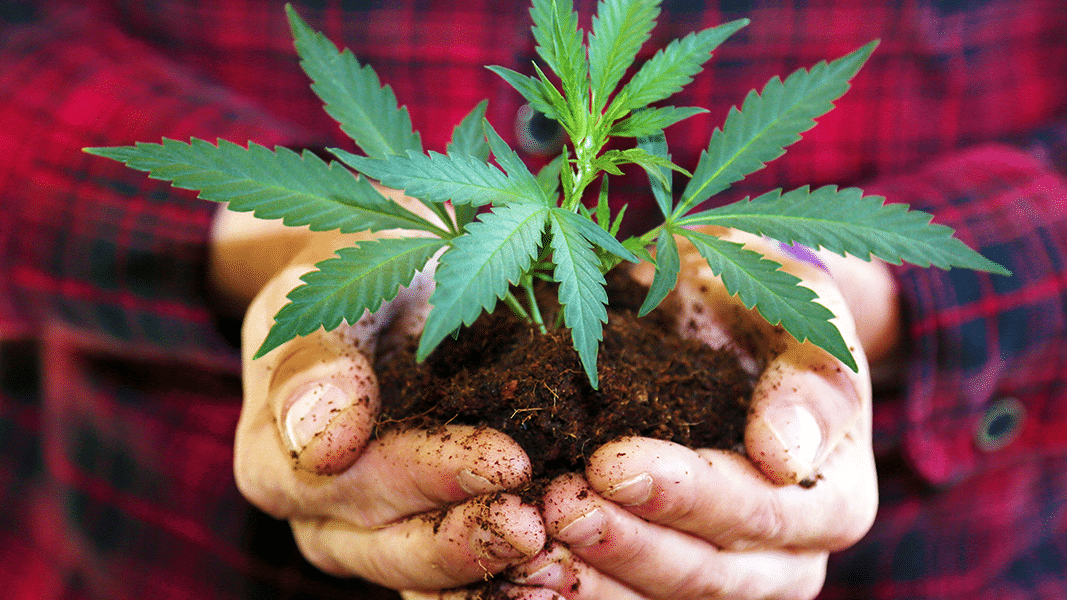Old Kai is an Emerald Triangle-based distribution business licensed by Mendocino County to transport cannabis from the farms and brands it works with to the main marketplaces in cities to the south. The company took all the steps required by the state and county to make their business compliant with the new laws and regulations, and they were excited to provide product to Bay Area dispensaries in anticipation of the January 1st roll-out of legal sales.
But in late December 2017, just eight days before adult use commerce would begin, an Old Kai delivery truck was pulled over on Highway 101 in Mendocino County by the California Highway Patrol, which called in the Mendocino Major Crimes Task Force as backup. Old Kai’s drivers were arrested and cited and nearly 2,000 pounds of cannabis were impounded as evidence.
Technically, Old Kai was not yet in compliance with the new regulations, because the new regulations did not go into effect until January 1st. And if Old Kai had followed the old guidelines pertaining to Proposition 215, California’s loosely regulated medical marijuana provision, the company would not have been compliant with the new policy for adult use.
Why did the California Highway Patrol and Mendocino County cops even bother to arrest an employee of a licensed cannabis distribution company when legal adult sales were imminent? Hadn’t these law enforcement officials heard that marijuana prohibition in Mendocino County, and California at large, was supposed to be over?
The Old Kai bust was not an anomaly. Rather, it was one of several shakedown operations mounted against licensed cannabis companies in the Emerald Triangle prior to the start of legal sales for recreational use.
Drug raids involving seizures and forfeitures have long been a cash cow for police, and a spate of arrests in Mendocino County followed a similar pattern during the waning days of prohibition: money and product are confiscated, never to be returned, and the district attorney’s office discreetly indicates that a six-figure sum will make the problem go away.
Now that marijuana is officially legal for grown-ups to purchase in California, will the cops back off? Not necessarily. State and local law enforcement could be very busy for a while targeting cannabis cultivators and businesses operating outside the regulated market.
The Road to Legalization
Although cannabis has been a mainstay of California’s unofficial economy for decades, the road to legalization has not been easy. Efforts to legalize marijuana at the state level began in the early 1970s and grew into a grassroots social movement, especially in San Francisco, the following decade during the worst days of the AIDS epidemic.
The passage of Proposition 215 in 1996 legalized the therapeutic use of cannabis, and a disparate network of cultivation collectives cautiously emerged in Northern California to provide medical marijuana to certified patients who could now legally possess it under state law. The first storefronts sprang up in San Francisco and Los Angeles and spread to a few other cities during the Clinton-Bush II years.
The federal government, working in tandem with state and local law enforcement, responded by threatening doctors, raiding gardens and dispensaries, and prosecuting suppliers. According to the Drug Policy Alliance, between 2006 and 2015 there were nearly half a million marijuana-related arrests in California, mostly for possession. State legislators, meanwhile, declined to regulate California’s nascent cannabis industry, which prospered, despite all, in a confusing legal limbo.
A pro-cannabis cultural shift in the United States was already well underway when President Barack Obama was inaugurated in 2009. Several TV reality shows featuring “marijuana millionaires” captivated a national audience in the throes of the worst economic downturn the nation had experienced since the Great Depression.
When Colorado and Washington voted to legalize recreational cannabis for adults in 2012, the Obama administration issued a memo outlining a look-the-other-way policy with respect to state marijuana laws. The four-page memo, written by Deputy Attorney General James M. Cole, basically asserted that marijuana businesses would not be subject to federal prosecution as long as they complied with state law.
Marijuana fever took hold in America, and the Green Rush went into overdrive. Growers, investors, scam artists, get-rich-quick schemers, and patients seeking relief began flocking to California and other Western states where a legal cannabis industry had taken root.
But the Cole Memo also asserted that each state, as a condition of avoiding federal interference, was required to originate its own cannabis supply and prevent it from leaving its borders. This has resulted in sky-high prices in Washington, “emergency shortages” in Nevada (which initiated recreational sales in 2017), and corrupt, pay-to-play medical marijuana legislation in Midwestern and East Coast states like Ohio and Florida.
Proponents of drug policy reform argued that a regulated adult market would generate significant tax revenues in states that legalized marijuana. They were right. From windfall taxes to job creation and increased tourism, the economic impact of legal cannabis commerce has exceeded expectations in Colorado, Washington, and Oregon.
Legislators in other states began to warm up to the industry. Several influential politicians in California endorsed Proposition 64, the successful 2016 ballot measure that allows adults to possess small amounts of cannabis and to cultivate as many as six plants for personal use. Prop 64 included anti-monopoly language that prohibited large-scale mega-grows for five years, while giving local jurisdictions considerable latitude to tax and regulate cannabis commerce, including onsite consumption at dispensaries and social clubs.1
Game Changer
In a surprise move, shortly before the new law was due to go into effect, the anti-monopoly provision was scrapped by state officials who had merged the medical marijuana program and adult use regulations into one system. Certain industry lobbyists got what they wanted, but this is not what California residents voted for.
There were no public hearings about the 11th hour reversal, which removed the cap on the number of cultivation licenses a single company could own. The rule-change directly contradicted an environmental impact report issued by the Department of Food and Agriculture a few weeks earlier.
Small and medium-sized cannabis growers felt betrayed, fearing a corporate takeover of the world’s largest legal marijuana market. The California Growers Association, which represents some Emerald Triangle growers, filed suit against the California Department of Food Agriculture hoping to overturn the rule that permits cannabis farms of near-unlimited size.
With a population approaching 40 million residents, the Golden State is an economic behemoth in both the cannabis industry and the nation at large. The staggering amount of money to be made has raised the stakes for farmers in the Emerald Triangle, the epicenter of domestic cannabis production, which produces much more marijuana than California residents can consume. Most of the marijuana grown in Northern California is smuggled across state lines and sold on the black market throughout the United States.
Caught between a voracious national consumer demand and recalcitrant federal law, the cannabis industry in California faces a precarious future. The same election that legalized cannabis for adult use in the Golden State also put Donald Trump in the White House and Jeff Sessions, an anti-marijuana ideologue, in charge of the Justice Department.
California’s Green Rush got a lot more complicated on January 4, 2018, when Attorney General Sessions announced he was rescinding the Obama-era Cole Memo, which had provided a measure of protection for cannabis cultivators and producers. The Attorney General’s drug war saber-rattling was a direct response to the legalization of marijuana for personal use and the advent of commercial sales in California.
Feeling the Byrne
There are no reliable numbers on exactly how much cannabis is being grown in California, but recent estimates have put the total between $30 and $40 billion a year, with only about $5 billion worth consumed in state. The rest supplies an insatiable black market from sea to shining sea, despite ongoing law enforcement efforts to eradicate as many marijuana plants as possible.
Marijuana eradication efforts in the Emerald Triangle have been funded for over 25 years via the Edward Byrne Memorial Justice Assistance Grant (JAG) Program. This federal block grant program promotes collaboration between the DEA and local police agencies, which have raided numerous marijuana grow-ops and destroyed tens of thousands of illegal plants.
State law enforcement officials split the Byrne Grant funds 60/40 with local jurisdictions and have broad discretion on how the money is actually spent. The program has been criticized for financially incentivizing local law enforcement to focus on non-violent drug offenders in lieu of more serious problems like rape, murder and other violent crimes.
After nearly three decades, the Byrne Grant program has actually done very little to stem the supply or demand for illegal drugs, especially cannabis. And money for eradication shows no signs of drying up – even though marijuana commerce is now legal and licensed in California.
In 2017, the Department of Justice disclosed it would award 56 local grants that year worth about $17.7 million each, for a total of $174.4 million, through the JAG program. One of these grants has funded the County of Mendocino Marijuana Eradication Team (COMMET), which continues to participate in federal and state efforts to destroy unlicensed grow-ops – not just in Mendocino, but throughout the state.
Mendocino County officials set aside an additional $60,000 in asset forfeiture money (seized from drug suspects) to pair with $70,000 from JAG to underwrite COMMET in 2018. And COMMET is just one of several agencies participating in anti-marijuana busts and shakedowns throughout the state, despite legalization.
Costly Failure
Historically, the Byrne Grant program sponsored the efforts of the Campaign Against Marijuana Planting (CAMP), a law enforcement operation that used helicopters and paramilitary units to identify and eliminate marijuana grows in the sparsely populated hills and mountains of the Emerald Triangle. In recent years, COMMET and other eradication efforts have begun to focus on the massive illegal gardens being cut into the California hills, targeting polluters and other black market cultivators.
But state agencies won’t be able to fully protect the forests and water supply if marijuana remains a Schedule I Controlled Substance on a federal level. And that’s where it remains – despite all the science showing that it should never have been scheduled in the first place.
As long as there is an illegal demand for cannabis, there will also be an illegal supply made artificially more valuable by the prohibition meant to prevent it. And because it is federally illegal, cannabis is valuable enough to grow illegally in the middle of remote forests, the ecosystem be damned.
In 2016, the DEA spent $4.3 million in California to eliminate marijuana plants, $200,000 in Oregon, and $760,000 in Washington.
“That’s a huge cost when evidence has shown that these eradication efforts have not significantly reduced the total amount of illegal marijuana making its way to the market,” said Diane Goldstein, a former police officer. “We have to ask if local marijuana eradication is the best way for the federal government to spend its money.”
Goldstein, now retired, was the first female lieutenant at the Redondo Beach Police Department in Los Angeles County. During her career as a peace officer, Goldstein participated in raids to uproot illegal marijuana gardens on public lands. She witnessed firsthand the toll the drug war was taking in her community. After she retired from the force, Goldstein became chairwoman of the board of Law Enforcement Action Partnership (LEAP), formerly known as Law Enforcement Against Prohibition, which describes itself as “a nonprofit group of police, judges, and other law enforcement professionals who advance drug policy and criminal justice solutions that improve public safety.”
Goldstein says that California needs to lower barriers to entry for small businesses and pull back on taxes in order to bring the good actors into compliance and stabilize local economies. If not, the black market will flourish and anti-marijuana law enforcement operations will continue.
“There is no amount of money the federal government can give marijuana eradication task forces that is going to solve this problem,” Goldstein concludes.
The Cup Runneth Over
The Emerald Cup is one of the biggest cultural events of the year for the Northern California cannabis scene. The annual December gathering features big-name musicians, thousands of vending booths for all things hemp and cannabis, educational panels and workshops, and a prestigious competition with awards for the best products in a variety of categories. The contest drew over 600 product entrees in 2017.
From a marketing perspective, winning a highly coveted prize for best THC concentrate, CBD-rich flower, gourmet edible or topical salve at the Emerald Cup can make a huge difference for a cannabis brand. But there’s a good possibility that fewer contestants will participate in the next Emerald Cup, as many farmers and producers are opting out of the legal market.
Organized by Tim Blake, a former smuggler-turned-black market grower-turned legal entrepreneur, the Emerald Cup didn’t start out as a high-profile event. Disguised as a birthday party, the first Cup was held in 2003 at a community center in Humboldt County,
“Back then, the first place winners wouldn’t even pick up their awards,” Blake recalled. “People came in masks and there were only a couple dozen entries. Everyone was afraid they would be busted, but they weren’t.”
Blake bought property in southern Humboldt and installed a medical marijuana dispensary on the premises, called Area 101, which included meditative gardens, a 1500-pound statue of Ganesh (the Hindu elephant god), and other “religious deities.” Area 101 hosted the Emerald Cup until it outgrew the space a few years ago. Today, the Cup has become so large, attracting more than 25,000 weekend visitors, that it sells out the entire Sonoma County Fairgrounds, its current venue.
Writing on the Wall
In many ways the evolution of the Emerald Cup reflects the changes that have transpired in recent years as the underground cannabis community has evolved into an above-ground, multibillion dollar industry.
Not everyone is happy about the transition. At last year’s Cup, anxiety and disdain for the new regulations were palpable among many of the vendors. “Black Markets Matter” signs appeared conspicuously at several vending booths.
The message was unmistakable: Legalization won’t work unless growers and producers who wish to be compliant have an easier path – which means California legislators must reform the overly burdensome tax code and other policies that favor well-heeled investors over long-time veterans of the cannabis scene.
Blake saw the writing on the wall. For several years, he and others had been preparing for legalization. Blake rolled the success of the Emerald Cup brand into a popular line of hash products, a cannabis nursery, garden center, and manufacturing and farming company that markets top-shelf rosin and popular, pre-loaded vaporizer cartridges.
Despite the anticipated cultural and economic shift within the cannabis community, Blake still felt it was important to support the passage of Proposition 64. “I supported Prop 64 in 2016 because I felt like as long as people were still going to prison and patients can’t get their medicine, we have to put an end to this,” he said.
But as small farmers and boutique producers struggle to keep their businesses profitable while coming into compliance, Blake sees falling prices on the cannabis commodity market as a threat to the old way of life up north.
“Among my friends and family there is going to be more hardship and bankruptcy,” he predicted.
Even though it had been evident for some time that prohibition’s days were numbered, few expected profit margins to shrink so quickly as California approached legalization. Blake says a “perfect storm” of factors, including legalization in other states, has shrunk the transition window and left a lot of growers in a state of panic about what’s to come.
See other articles in the Green Rush Blues series.
Angela Bacca is an Oregon-based freelance journalist with an MBA and 10 years of experience in cannabis media. She specializes in coverage of cannabis in conservative states, science, medicine, politics, business, culture, and media. © Copyright, Project CBD. May not be reprinted without permission.
Footnotes
- After Colorado’s successful roll-out of legal marijuana sales in 2014, California officials began to prepare for the inevitable. On October 9, 2015, Gov. Jerry Brown signed the Medical Marijuana Regulation and Safety Act (MMRSA), into law. A year later Californian voters passed Proposition 64, a ballot measure that legalized cannabis for adult use. Lengthy statewide medical regulations were released in the spring of 2017, more than twenty years after medical marijuana had been legalized in the Golden State. By the summer, the state pulled the medical regulations in order to merge the medical and recreational laws into one system, the Medical and Adult-Use Cannabis Regulation and Safety Act (MAUCRSA). Emergency regulations for MAUCRSA were released in late November 2017, leaving little time for growers and producers to comply with the new rules prior to the Jan. 1st deadline.










